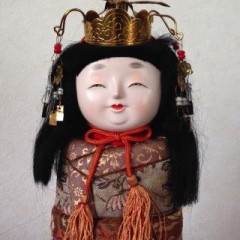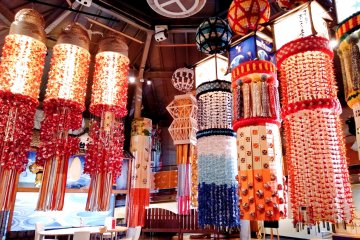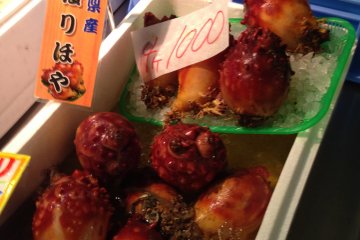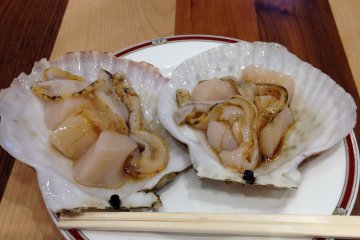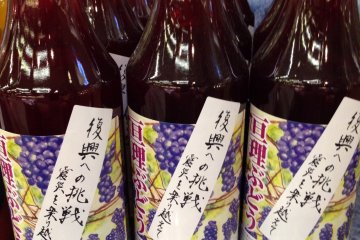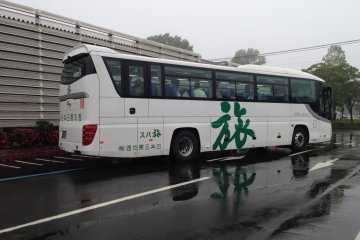Mori no Ichiba is one of the most exciting markets now in Sendai. 29 retail shops including 7 restaurants are open, providing fresh seafood, vegetables, fruits and groceries. Most shops in the market were previously open for business in Miyagi Prefecture, around cities such as Ishinomaki and Onagawa. Some stores are from Soma in Fukushima and Taneichi in Iwate. As you might have noticed, these shops came from the Sanriku coast, which was severely damaged by the tsunami in 2011.
Along with the recovery of fishing ports, the fish catch has increased to 80% of its previous volume. Thank goodness, we have abundant fish from our local seawater like it used to be! Oyster and hoya (sea squirt) of the finest quality also returned to the market after three years of cultivation.
This market is a showcase for the best local seafood. It features the freshest fish and shellfish such as tuna from the Sanriku coast, oysters from Ojika Peninsula and scallops from Ishinomaki. Now uni (sea urchin) season is coming, so one shop from Onagawa is busy making gorgeous uni-don (a bowl of rice topped with uni) for customers.
If you are an oyster lover, pick up fresh oysters from an open display case. A plate of fresh oysters will be prepared right away for you, while you are waiting at a table beside the shop. If you prefer having lunch in a restaurant, an oyster bar called Mori no Kaki-Goya may be the best choice for you.
There are varieties of Japanese entrees in the market, such as sushi, bento (Japanese style lunch box), ramen noodles, gyutan (grilled beef tongue), sasakama (baked fish-cake), steamed hoya (steamed sea squirt), tonkatsu (fried pork with bread crumbles), tofu and so on. You will see most of Sendai's favorites and delicacies in this market!
Also, they are selling locally grown vegetables and groceries. Among them, kibudo grape juice from Yamamoto Town has a special story to tell. Despite the fact that the factory and neighboring vineyard were swept away by the tsunami, cleanup crews remarkably found a few barrels of grape extract which were barely remaining intact. On January in 2013, a new factory revived operation to produce grape juice with a label reading ”Challenge to the recovery" after two years of continuous efforts. But they still have to wait for six years for the harvest of their own grapes.


